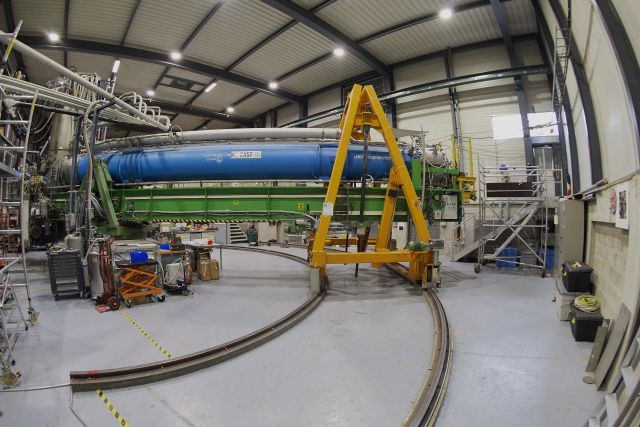CERN’s CAST Experiment Limits Dark Matter Possibilities By Not Finding Solar Axions

The visible universe that we can see and interact with makes up a small, less than 5 percent of the cosmos, with the remaining 95 percent being composed of dark energy (68 percent) and dark matter (27 percent). And so, scientists have been trying to find a way to observe and identify dark matter for decades now.
Their latest attempt, using a specially built telescope at CERN, failed to find the hypothetical particle they were looking for. Axions are hypothetical particles that interact very weakly with ordinary matter and could explain dark matter, which makes up about 85 percent of the universe’s total mass. First hypothesized decades ago, the search for axions was the object of the CERN Axion Solar Telescope (CAST) experiment, which used a special telescope trained at the sun.
Called a helioscope, CAST was built using a 10-meter superconducting magnet originally built for the Large Hadron Collider. Moving on a rail, the CAST helioscope was tracking the sun’s movement for 90 minutes each at dawn and dusk for several months every year since 2003. Any solar axions that entered the observation area would be converted by the strong magnetic field into X-ray photos, which could be detected by sensors at either end of the magnet.
Based on CAST data collected between 2012 and 2015, researchers announced in an open-access paper published Monday in the journal Nature Physics that they had found no evidence for solar axions. The scientists can now place limits “on the strength of the coupling between axions and photons for all possible axion masses” that CAST is capable of detecting, according to a statement Monday on the CERN website.
Igor Garcia Irastorza, deputy spokesperson for CAST, said in the statement: “The limits concern a part of the axion parameter space that is still favoured by current theoretical predictions and is very difficult to explore experimentally. For the first time, we have been able to set limits that are similar to the more restrictive constraints set by astrophysical observations.”
This narrows the parameters within which scientists will now search for axions, which are among the best possible matches for dark matter particles. Other candidates include sterile neutrinos, the search for which has also drawn a blank so far.
CAST’s expanded search is now looking for other low-energy particles, including other weakly-interacting particles from the dark energy spectrum, such as “solar chameleons.” Meanwhile, a new, much larger and more sensitive axion helioscope, called IAXO, has been proposed, to be built using data and learnings from CAST.
Dark matter, which is all-pervasive now, made up only a small fraction of the galaxies in the early universe, according to four recent studies, which said most galaxies that formed three to four billion years after the Big Bang were composed almost entirely of normal matter. And yet, now there are galaxies — such as Dragonfly 44 — that are made up almost entirely of dark matter.
Despite not being observable directly, the existence of dark matter is inferred through the significant gravitational influence it wields in the universe.
© Copyright IBTimes 2024. All rights reserved.




















